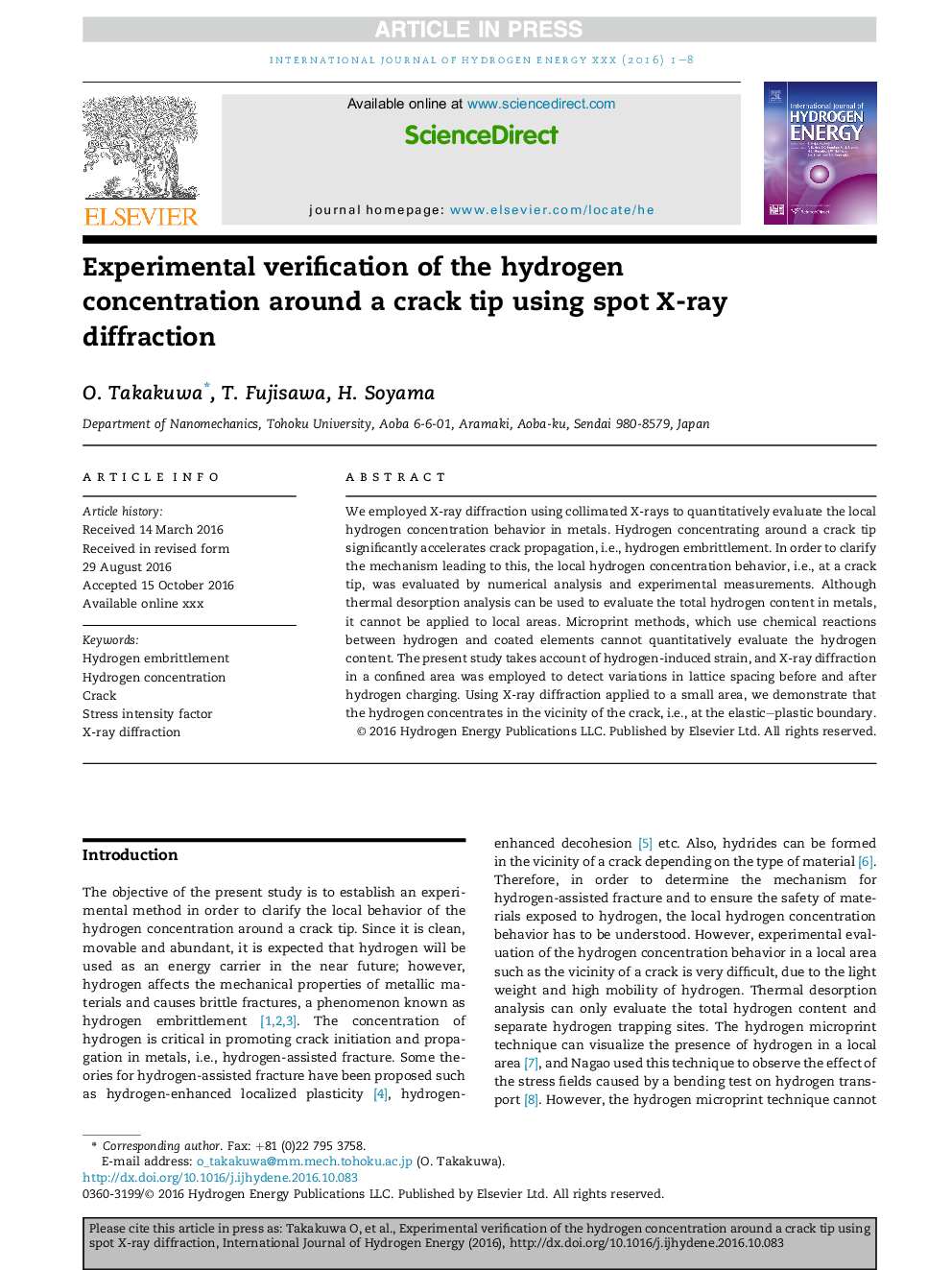| Article ID | Journal | Published Year | Pages | File Type |
|---|---|---|---|---|
| 5145842 | International Journal of Hydrogen Energy | 2016 | 8 Pages |
Abstract
We employed X-ray diffraction using collimated X-rays to quantitatively evaluate the local hydrogen concentration behavior in metals. Hydrogen concentrating around a crack tip significantly accelerates crack propagation, i.e., hydrogen embrittlement. In order to clarify the mechanism leading to this, the local hydrogen concentration behavior, i.e., at a crack tip, was evaluated by numerical analysis and experimental measurements. Although thermal desorption analysis can be used to evaluate the total hydrogen content in metals, it cannot be applied to local areas. Microprint methods, which use chemical reactions between hydrogen and coated elements cannot quantitatively evaluate the hydrogen content. The present study takes account of hydrogen-induced strain, and X-ray diffraction in a confined area was employed to detect variations in lattice spacing before and after hydrogen charging. Using X-ray diffraction applied to a small area, we demonstrate that the hydrogen concentrates in the vicinity of the crack, i.e., at the elastic-plastic boundary.
Related Topics
Physical Sciences and Engineering
Chemistry
Electrochemistry
Authors
O. Takakuwa, T. Fujisawa, H. Soyama,
